Second Galileo Quartet Ready for Launch atop Ariane 5 Rocket

Four more satellites are set to join the European Galileo Navigation Satellite System on Tuesday, targeting liftoff at 18:36 UTC atop an Ariane 5 ES rocket blasting off from French Guiana. Lifting Galileo Satellites 19 through 22, Ariane 5 will be tasked with an ascent mission of nearly four hours to send the 715-Kilogram satellites directly into their checkout orbit in Plane A of the growing constellation.
Increasing the total number of operational Galileo satellites to 20, Tuesday’s launch will put the constellation a considerable step closer to fully operational capabilities that will be reached when 24 active satellites have taken their positions in three orbital planes.
The first 14 Galileo satellites, including test and prototype spacecraft, were launched two at a time on Soyuz rockets from the Guiana Space Center and Baikonur, starting with a pair of pathfinder satellites in 2005 and 2008. To end reliance on the Soyuz in a changing political atmosphere, it was decided to launch the last dozen satellites atop specially modified Ariane 5 ES rockets.
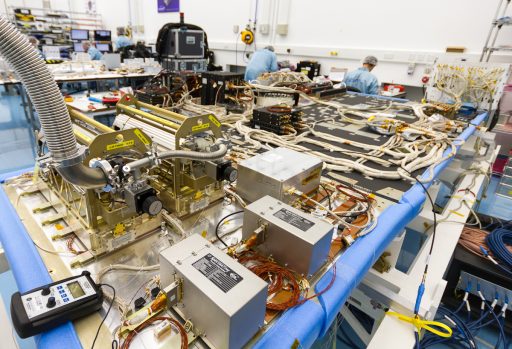
This is the first launch in support of Galileo this year and comes over a full year after the first Ariane 5 launch with Galileo Satellites in November 2016 on mission VA233. However, despite not adding any satellites to the constellation up to this point in 2017, the Galileo program can look back at a very busy year spent sorting out a potentially serious problem affecting the atomic clocks installed on all production satellites that had already been launched into orbit and those in testing en-route to the launch pad.
News of the clock problem emerged in January by which point ten atomic clocks had failed across the 18 satellites in orbit with one being re-started and nine considered failed for good. The number of clock failures and the timing of their occurrence after each satellite entered operations pointed to a potential systemic design issue and required detailed investigation. Even more worrying, both types of clocks installed on the Galileo satellites were affected – the traditional Rubidium Atomic Frequency Standard (RAFS) Clocks considered a well-proven and robust design and the more-precise Passive Hydrogen Maser (PHM) Clocks.
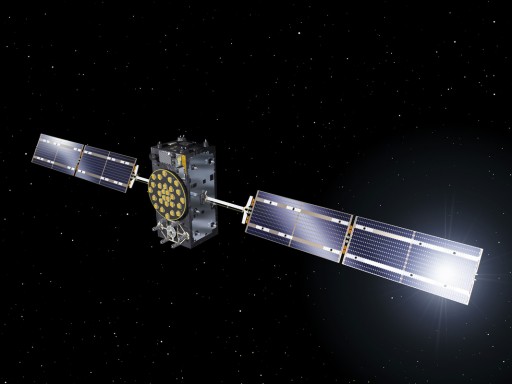
Detailed analysis of the failures showed two separated weak points in the two clock types. The problem with the RAFS clocks was traced back to a susceptibility to short circuits in a particular component introduced as the result of a certain testing procedure on the ground while the issue on the PHM clocks was traced back to the operational environment of the clocks with respect to the way the clocks are powered on an off. Procedural changes to the operation of the PHM clocks and replacement of an inexpensive electronics component on the RAFS clocks were expected to solve the issues.
The Ariane 5 VA240 launch with Galileo FM-15 through 18 had been pushed to November at the beginning of the year to provide sufficient time for the investigation, corrective action and re-qualification of the satellites. Launch eventually settled for a target date of December 12 and the Galileo satellites were delivered to French Guiana in September and October to enter their final processing campaigns that included fit checks, stand-alone testing and propellant loading before the four satellites began taking their places around the purpose-built launch dispenser.
>>Galileo Satellite & Constellation Overview
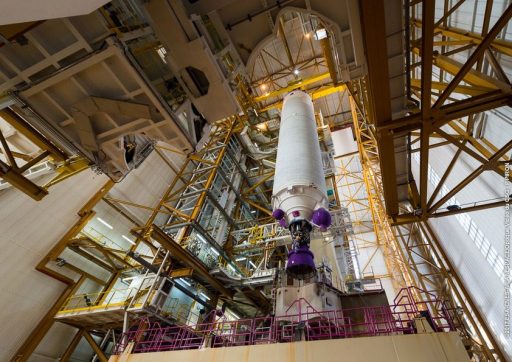
The Ariane 5 rocket for this mission arrived at the space base in mid-September and completed integration operations over the course of October. For Galileo, Ariane 5 employs its ES configuration that is different from the ECA version in charge of the rocket’s bread and butter business of launching Geostationary Communications Satellites. Instead of an ESC-A Cryogenic Upper Stage that dispatches heavy payloads to elliptical orbits, the ES version features an EPS upper stage capable of starting its engine multiple times to boost the satellites directly into Medium Earth Orbit.
Prior to Galileo, Ariane 5 only employed the ES version five times to lift the five Automated Transfer Vehicle Missions between 2008 and 2014, lofting the 21-metric ton cargo ships into an orbit 260 Kilometers in altitude to deliver supplies to the International Space Station. The Galileo missions are taking the EPS stage to new heights, requiring a direct insertion close to their operational orbit which creates a record-setting mission duration for the Ariane 5 rocket.
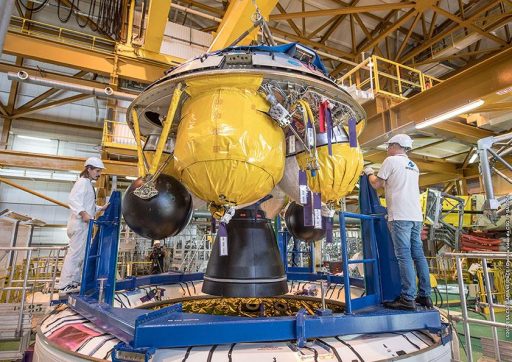
Adapting the Ariane 5 rocket for the launch of Galileo was a lengthy process that started in 2012 to establish a second source for launching the satellite fleet aside from Soyuz to ensure the program can remain on schedule even in case one of the two launchers is not available (for political or technical reasons).
Modifications needed on the Ariane 5 went beyond the fabrication of a multi-satellite dispenser and included structural improvements on the Vehicle Equipment Bay, power system re-design for prolonged missions and changes to the electrical and thermal systems of the existing EPS design. For ATV, EPS only had to operate for an hour before releasing its passenger – Galileo needs a coast of over three hours after the initial propulsion phase of the mission.
Lofting quadruplets of Galileo satellites required the performance of the existing Ariane 5 ES/ATV to be increased. This was achieved by cutting mass from the structural system of the Vehicle Equipment Bay, possible because the four Galileo satellites with a total mass of 3.3 metric tons (including dispenser) are much lighter than the massive ATV craft.
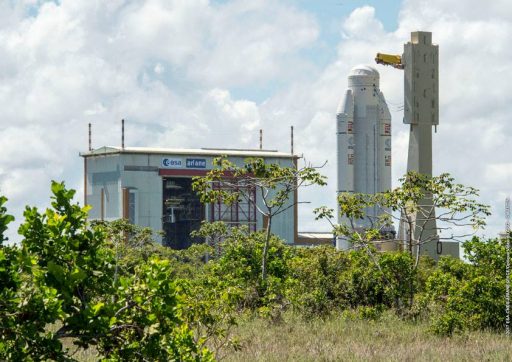
Thermal system modifications were also important given the four-hour mission duration that exceeds all previous Ariane 5 flights that normally last no more than an hour. Feeding into thermal considerations was the 2014 failure of the Fregat upper stage that carried two Galileo satellites into a non-compliant orbit due to a design flaw that placed a propellant line in close proximity to a Helium pressurant line which led to the reaction control system fuel line becoming obstructed due to freezing.
The payload dispenser for Galileo quadruplet launches was designed by Airbus and Arianespace based on the two-satellite adapter used on the Soyuz. Extensive modeling was performed to ensure the adapter design is compatible with loads and vibration encountered during launch, also taking into account oscillation modes between the launcher and spacecraft stack.
Clustered around their 430-Kilogram payload adapter, the four OHB-built satellites are hidden under a 14-meter long payload fairing, targeting liftoff at the instant of 18:36:07 UTC on Tuesday – the precise launch time needed for the injection of the satellites into their target orbit.
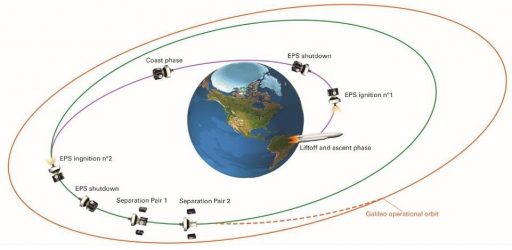
The initial ascent of Ariane 5 will look very similar to those of the ECA variant; however, targeting an orbital inclination of 57 degrees will require the launcher to fly on a launch azimuth to the north-east instead of the equator-hugging trajectories used by GTO missions. Blasting off from the ELA-3 site, the 48-meter tall rocket will have a thrust of over 1,400 metric-ton-force, provided by its Vulcain 2 main engine and twin Solid Rocket Boosters.
The boosters, each burning 237 metric tons of propellant, will fire until T+2 minutes and 20 seconds to provide the initial kick needed to send the Galileo quartet on its way. After separation of the 31.5-meter long boosters, Ariane 5 will continue pushing toward orbit with its main engine alone, generating 136,000 Kilogram-force of vacuum thrust.
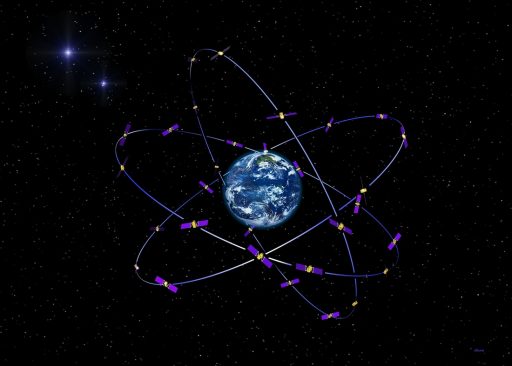
The payload fairing will separate three minutes and 44 seconds into the flight when the rocket will have reached an altitude of 115 Kilometers where aerodynamic forces are no longer a factor. The first stage will consume 170 metric tons of cryogenic propellants over the course of eight minutes and 55 seconds of powered flight, dropping away from the EPS second stage five seconds after main engine cutoff. Assuming control of powered flight, the EPS will fire up its 2,800-Kilogram-force Aestus engine on an initial burn of ten minutes and 50 seconds that will put the stack into an elliptical transfer orbit peaking at around 22,925 Kilometers in altitude.
To reach the high point of its orbit, EPS will spend three hours and eight minutes in coast mode so that the second burn can serve as a circularization maneuver. Re-start is expected three hours, 27 minutes and 50 seconds after launch on a burn of six minutes and 18 seconds to inject the stack into a perfectly circular orbit at 22,922 Kilometers in altitude. Separation of the Galileo satellites will be completed in pairs at T+3 hours and 35 minutes and T+3 hours and 55 minutes to ensure all four enter a safe path without re-contact risk.
The Galileo satellites are initially placed into their graveyard orbit that is below the 23,222-Kilometer operational orbit of the constellation. This is done in case a satellite can not be activated after launch – ensuring the operational planes of the constellation are kept free of dead satellites.

